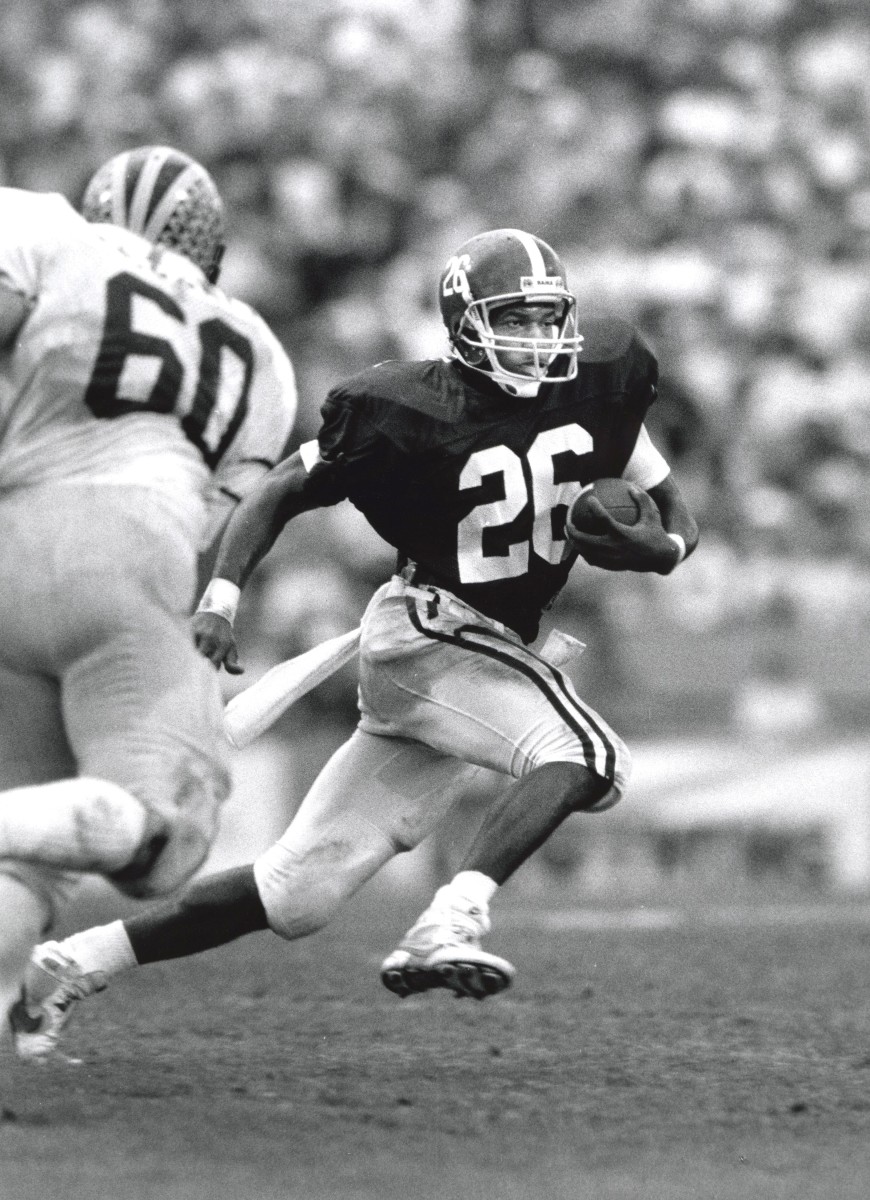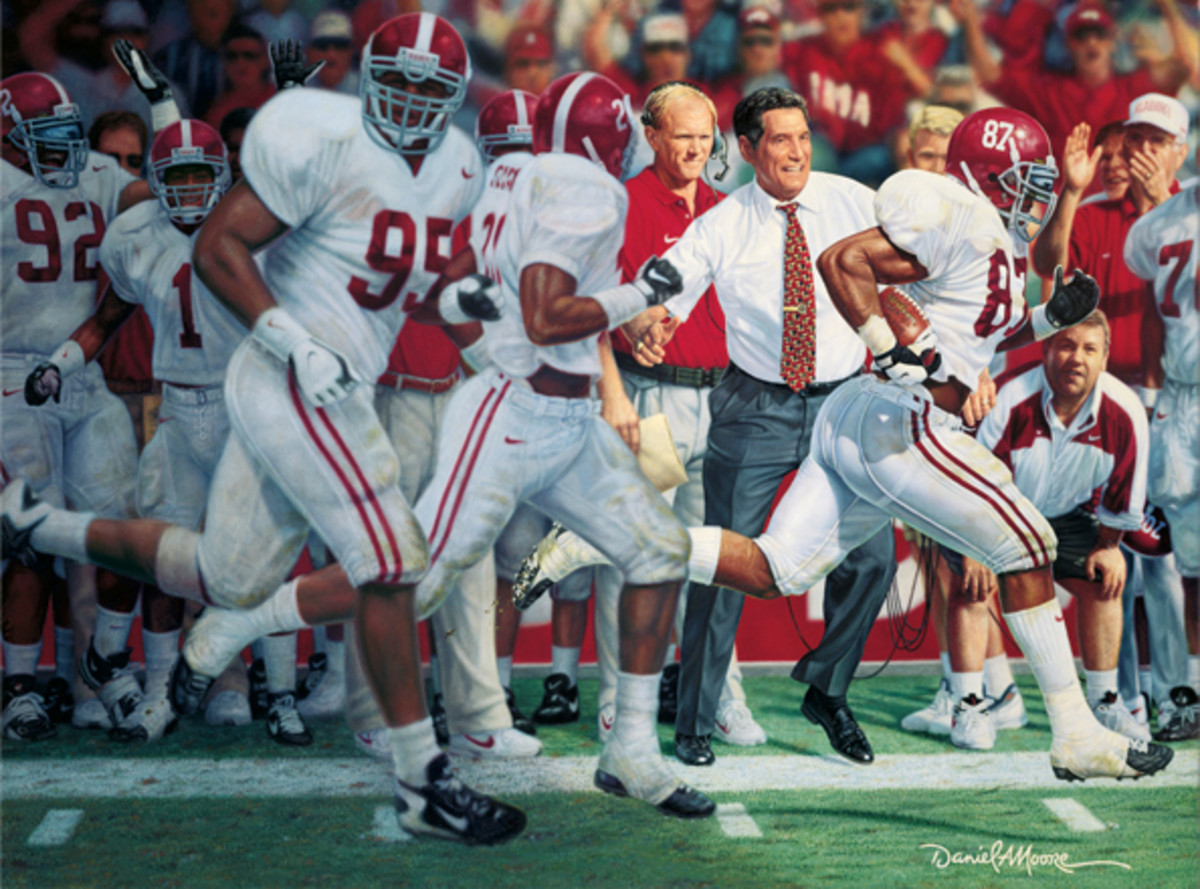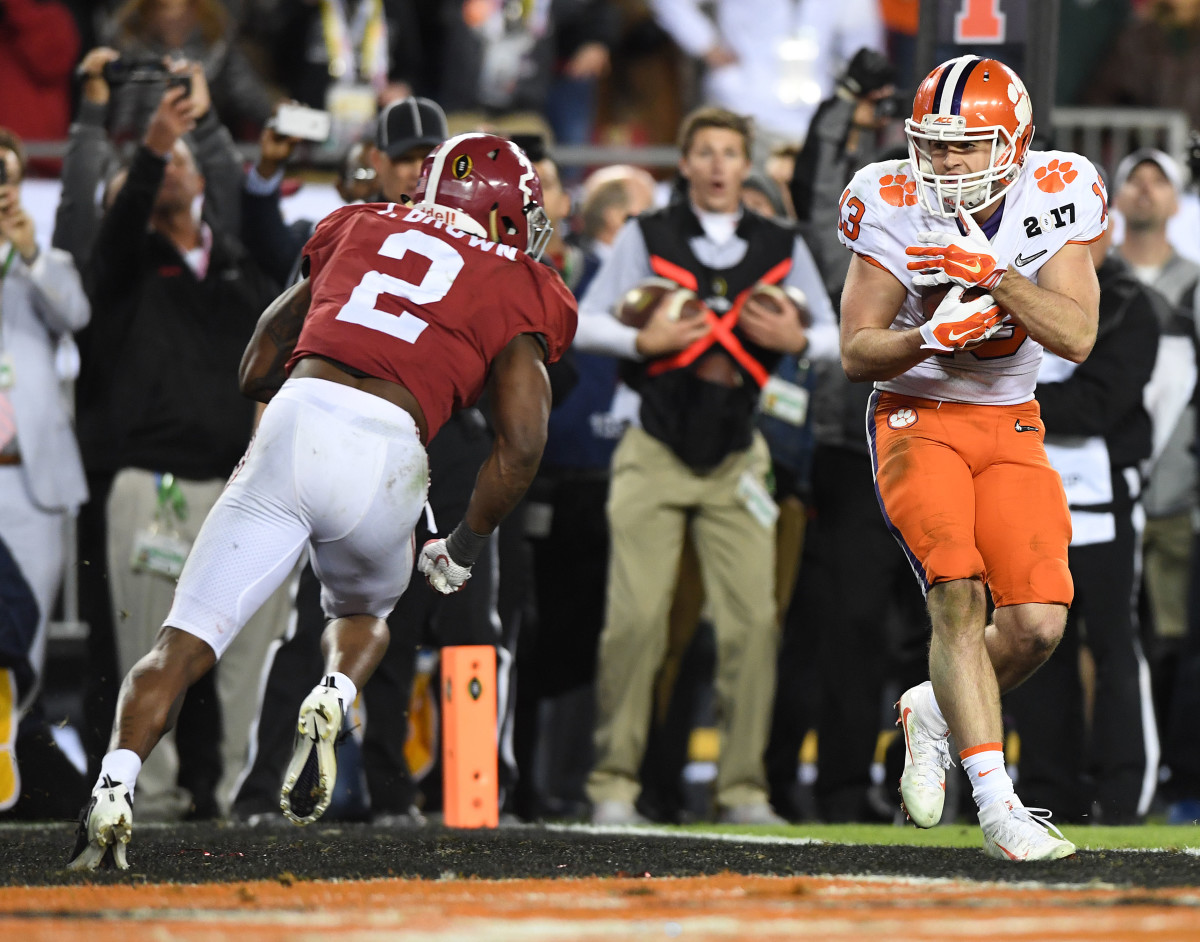Alabama Hasn't Played Often in Tampa, But Still has Emotional Ties There

There were tears shed, both inside and outside the Alabama Crimson Tide locker room that afternoon. The objective of winning the final game with Gene Stallings as the head coach of the Alabama Crimson Tide had been achieved, but then came the realization that it was time to say goodbye.
In some ways, that was the toughest task of the 17-14 victory over Michigan in the Outback Bowl. Shortly after the players hoisted and carried the retiring coach to midfield in celebration, fans lined the hallways and exit at Houlihan's Stadium (formerly known as Tampa Stadium) for the final sendoff.
“It was real emotional,” Stallings said after the coaching staff presented him with the game ball. “I can’t think of a more fitting game.”
Alabama obviously hasn't played many times in Tampa, and there's a decent chance that Saturday's game against South Florida could be its last at Raymond James Stadium, which opened in 1998 and is the primary home of the Tampa Bay Buccaneers. The Florida Board of Governors recently approved spending $340 million for a 35,000-seat on-campus stadium for the Bulls, which is slated to open in 2026.
But the Crimson Tide's previous visits to the Bay Area have all been emotional ones, including a national championship game and Stallings' last hurrah.
''The thing about winning your last game is that you don't have to apologize throughout the offseason,'' he said. ''For some reason, spring practice is a little easier, you enjoy the summer a little bit more, and the transition will be a little smoother..
"As I was telling the players last night and a little before the game, a lot had been said about maybe winning the game for me. And I wanted that to be the absolute furthest thing on their minds. I said, 'The only way you can embarass me is to not play hard.' ''
Stallings, who had announced his resignation in November 1996, finished his seven-year career at Alabama with wins in his last five bowl games and the 1992 national title. It was the Crimson Tide's only crown between the Paul W. "Bear" Bryant and Nick Saban dynasties.
1988 Hall of Fame Bowl
It was a fitting setting for the first meeting between Alabama and Michigan, although Wolverines assistant coach Gary Moeller had to fill in for head coach Bo Schembechler after he suffered a heart attack three weeks previous. The game still came down to a fourth-down play during the final minute.
Specifically, after driving from its own 38 to the Crimson Tide 20-yard-line, quarterback Demetrius Brown threw into the end zone on fourth-and-3 and connected with John Kolesar for the decisive touchdown in the 28-24 victory. It was the flanker's only reception of the game, and required him to jump up to make the catch.
After falling behind 21-3, Alabama pieced together scoring drives of 72, 85 and 79 yards, with running back Bobby Humphrey running in two touchdowns en route to 149 rushing yards on 27 attempts. Crimson Tide quarterback Jeff Dunn completed 23 of 40 passes for 269 yards, and had a 16-yard touchdown to tight end Howard Cross.
Jamie Morris' 234 yards rushing set a Hall of Fame Bowl and Michigan bowl record. He also broke the Wolverines' single-season rushing record with 1,703 yards and ended his career with 4,393 rushing yards, the third-best in Big Ten history.

1996-97 Outback Bowl
Linebacker Dwayne Rudd returned an interception 88 yards for the go-ahead score as No. 16 Alabama went on to secure the 17-14 victory over No. 15 Michigan.
The fourth-quarter pick was in the right flat on a ball thrown by Brian Greise, with Rudd subsequently racing untouched down the left sideline with 12:13 to go for a 10-6 lead.
“I didn’t get a good look at the play,” Rudd said. “I looked up and saw the ball and just grabbed it. When I turned around, all I saw was a big field in front of me and I just ran straight for the end zone. It felt sort of good to get in the end zone. I haven’t been there all year.”
Shaun Alexander scored on a 46-yard run with 2:15 left in the game, increasing the seemingly safe cushion to 17-6. However, Griese led the late counterattack. His 9-yard scoring pass to Russell Shaw, and Chris Floyd’s run for the two-point conversion got the Wolverines to within three points with 1:16 left. Chad Goss recovered Michigan’s onside kick attempt and Alabama ran out the clock.
Griese was 21-for-37, 287 yards, with one interception and a touchdown. Alabama used John Brock’s 43-yard field goal to take a 3-0 lead with 3:42 left in the first quarter, but Michigan grabbed a 6-3 halftime lead on field goals of 44 and 22 yards by Remy Hamilton in the second quarter.
Alabama won despite being outgained 415-247. Alexander rushed for 99 yards on nine carries, while quarterback Freddie Kitchens struggled, hitting just 9 of 18 targets for 65 yards.

2016-17 National Championship
For the second straight season the national title game was between Alabama and Clemson, and once again it went down to the wire as the Crimson Tide had won 45-40 in Glendale, Ariz., the previous year. But this time Dabo Swinney's Tigers pulled out the win in dramatic fashion, 35-31.
The lead changed hands three times over a span of four minutes and 38 seconds, with Alabama going ahead 31-28, with 2:01 remaining. After Clemson drove into the red zone, a pass-interference penalty had it at the 2-yard-line with nine seconds to go, when the Tigers ran a designed rub route to free up wide receiver Hunter Renfrow, who caught the touchdown pass from quarterback Deshaun Watson with 1 second left on the clock.
Alabama freshman quarterback Jalen Hurts was 13 of 31 for 131 yards and a passing touchdown, and also had 63 rushing yards, including a 30-yard touchdown with 2:07 left to give the Crimson Tide the late lead. Sophomore running back Bo Scarbrough rushed for 93 yards and two touchdowns on 16 carries before leaving the game midway through the third period with an injury. Senior tight end O.J. Howard led all receivers with 106 yards and a touchdown on four receptions.
Defensively, linebacker Reuben Forster led all players with 12 tackles, while linebacker Rashaan Evans had 11, and safety Ronnie Harrison notched 10. The Crimson Tide also had four sacks (including one by Jonathan Allen) and two fumble recoveries.
It was Nick Saban's first loss in a national championship game.

Alabama vs. South Florida
Overall, Alabama and South Florida have only played once before, and although it was a home game for the Crimson Tide it wasn't at Bryant-Denny Stadium. The lone matchup occurred on Aug. 30, 2003, in Birmingham, for Alabama's final home game played at Legion Field. It's USF's 27th season playing football, and 24th at the FBS level.
In 1960, Alabama did host the University of Tampa, which now competes in Division II. The Crimson Tide won 34-6.
In terms of connections, there aren't that many. Nick Saban has never faced South Florida before, and this time last year USF's first-year head coach Alex Golesh was Tennessee's offensive coordinator. Alabama analyst Charlie Strong was USF's head coach from 2017-19, and offensive line coach Eric Wolford was on the Bulls' inaugural staff (1997-99).
Among players, Crimson Tide cornerback Kool-Aid McKinstry has a cousin on the Bulls, right tackle RJ Perry. Tampa is the original home of former All-American Javier Arenas. Quarterback Phillip Ely was recruited by Saban and saw some game action in 2012 before transferring to Toledo. Other former Alabama players from there include guard John Fruhmorgen (1986-88), quarterback Alan Gray (1979-81), split end James Mallard (1980), and linebacker David Dewey Mitchell (1975-76-77), while College Football Hall of Fame defensive lineman Marty Lyons was from just across the bay, in St. Petersburg.
See Also
How to Watch: No. 10 Alabama Football at USF
What Jalen Milroe's Numbers Indicate Heading into South Florida: All Things CW
